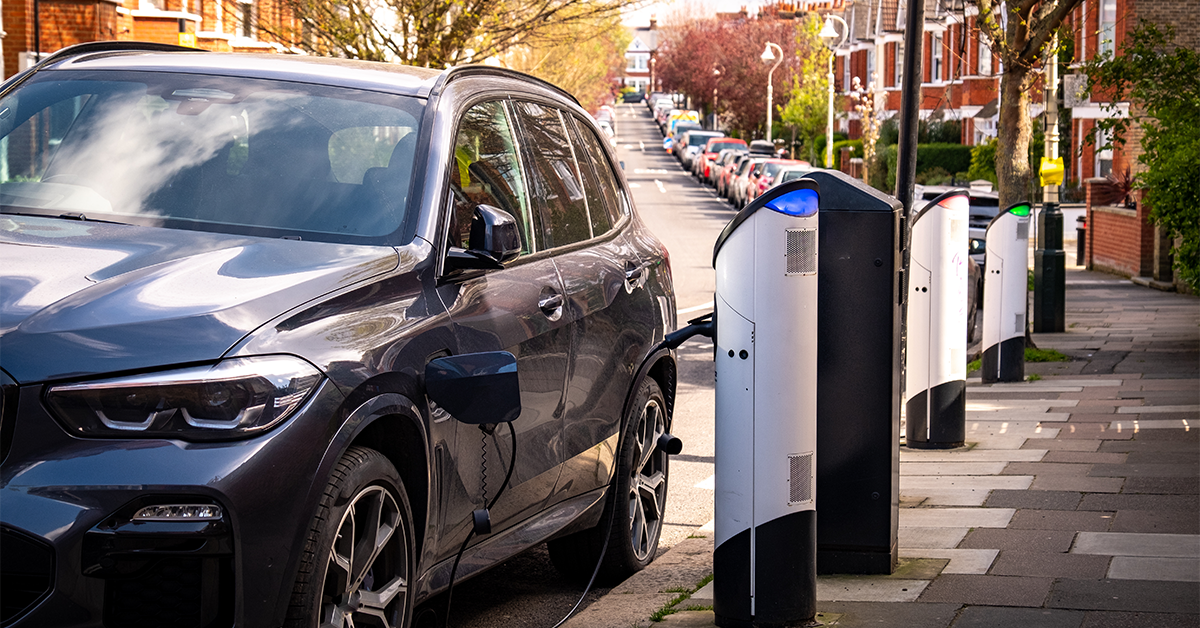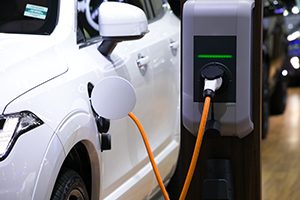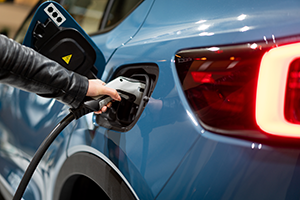Our 2025 Sustainability Report is here! Dive in.
EVs are Changing the Way Utilities Do Business
September 6, 2022 •Lee Ann Head

Aside from automakers, no industry has a greater interest in the transition from internal combustion engine vehicles to electric vehicles (EVs) than the nation’s electric utilities.
There’s the obvious reason: utilities make money by selling and managing the delivery of electricity. But besides preparing for increased demand, utilities are being tasked by state regulators, and even consumers, with helping the US economy prepare for mass EV adoption. Although EVs today still only account for approximately 5% of the U.S. vehicle market, energy-industry researchers at McKinsey forecast that EVs could potentially reach 48 Million by 2030, if federal targets are met. And according to the National Renewable Energy Laboratory (NREL), electrified transportation may result in between 58 to 336 TWh of electricity consumption annually by 2030, depending on the speed and type of vehicle deployment. In an era of flat and declining electric usage, this is welcome news for electric utilities.
The net impact is that EVs are changing the way utilities do business, and the changes are just getting started.
Driving Adoption
Through both self-interest and the demand of both policymakers and regulators, utilities are leading the charge to push EV adoption forward. There is, however, much work to be done to prepare infrastructure for that reality and ensure EV owners are able to charge their vehicles easily and conveniently.
The Biden administration has set a goal to install 500,000 new EV chargers on U.S. roads by 2030 and will put $7.5 billion in funding from the Bipartisan Infrastructure Law behind it. Much of that $7.5 billion will go towards local governments for the installation of DCFC/Level 3 fast chargers on highway corridors. Utilities will need to respond to these state-level projects by ensuring the energy, power capacity, grid transmission and distribution is able to meet the needs of the new charging infrastructure.
As an example of state-level activity, the California Public Utilities Commission (CPUC) has acted on a directive from state lawmakers to create new tariff rules that ensure utilities provide “utility-side make-ready” infrastructure to support the rollout of EV chargers in the state. The CPUC has also approved utility-specific programs, such as a $437 million program for Southern California Edison to install 40,000 chargers.
Utility regulators are beginning to authorize programs that allow utilities to recover costs of EV education and outreach, the goal of which is to increase consumer demand for EVs and grow EV sales.
Managing Peak Demand and Grid Impacts
The U.S. Department of Energy forecasts as much as 38% growth in U.S. electricity consumption by 2050 because of the electrification of the economy, largely from EV adoption. Bloomberg NEF finds a near 100% electrification of road transport by 2050 would increase global electric demand by 25%.
At face value, an increase in demand for electricity is a positive for utilities. But a wrinkle comes in the form of one critical question: How will EV adoption impact peak demand?
A status quo approach to utility-customer relationships could lead to large peak demand increases across most utility systems, which would likely result in an overwhelming amount of investment in new generation to meet demand, plus additional transmission and distribution investments to connect the new power sources.
 The impacts are expected to vary from region to region. A University of Texas at Austin report estimated that 100% vehicle electrification in Wyoming would only result in the need to increase electricity production by 17%. The same level of EV adoption in Maine would require the state to increase electricity production by 55%.
The impacts are expected to vary from region to region. A University of Texas at Austin report estimated that 100% vehicle electrification in Wyoming would only result in the need to increase electricity production by 17%. The same level of EV adoption in Maine would require the state to increase electricity production by 55%.
Regardless of peak demand changes, upgrading the grid is necessary to accommodate the demands of EV charging. The Boston Consulting Group estimates that accommodating 40 million EVs in the U.S. would require $200 billion in grid upgrades. Depending on the service area, the cost of grid upgrades is expected to be $1,700 to $5,800 per vehicle.
But the level of investment needed in new generation and grid upgrades can be mitigated. To minimize the system costs of additional demand, utilities will want to manage and influence customer behavior early on.
Utilities will want to take a multi-pronged approach to managing the expected demand. First, they will need to invest in education initiatives that bring customer awareness to how EV charging equipment and behaviors can impact both the grid, and household energy costs. Next, leverage and promote smart charging technologies that react to price or load signals during critical peak demand periods. In addition, utilities need to influence EVSE purchase decisions by incentivizing and directly supplying chargers that can be actively controlled via a DERMS platform and reward customers who enroll in managed charging programs. Lastly, it’s critical that utilities develop EV make-ready programs that help to influence charger locations, equipment selection, and facilitate the installation process for commercial customers.
Utilities need to become trusted partners for their customers as they are evaluating EVs and making EVSE investment decisions if they want permission to reach behind the meter to help their customers to better manage energy use, and in return, help themselves better manage the influx of demand.
permission to reach behind the meter to help their customers to better manage energy use, and in return, help themselves better manage the influx of demand.
They also need their regulators to authorize new programs and rate structures. While some states are ahead of the curve in allowing utilities to offer customers innovative rate options such as time-of-use pricing or energy contracts and services designed specifically for EV owners, other states still limit utilities to traditional billing, restraining customers from proactively managing their energy use.
Regardless of where a utility is on the journey toward the EV revolution, the transition can benefit from working with a partner like Franklin Energy to provide customer EV education, integration of EV charging with existing energy efficiency and demand response programming, as well as EV charger sales via a marketplace, along with application and incentive processing, and trade ally network development. Allow us to design and implement an EV program that meets regulatory expectations and serves customer needs.


